The fifth update to the annual Japan Meteorological Corporation’s Cherry Blossom Forecast was released this week, with the 2024 season slated to start a day earlier than the 2023 season here in Tokyo. The full season begins from roughly mid-March in most parts of Japan, ending at the end of April for the coldest northern reaches of Hokkaido. It feels like half of the world waits for updates to the cherry blossom forecast, relying on it to decide the exact dates they will book their flights and hotels to Japan. I pity the poor soul in charge of producing this holy scripture of Japanese tourism every year.
But if you truly love cherry blossoms, don’t just hit the usual spots in Kyoto and Tokyo to view them. If you make a little effort, you can enjoy the beauty of Spring in Japan in some other amazing places around the country. These alternatives will be less crowded and give a more authentic vibe than just hanging around the big cities. Ready for the list? Hit it.
Himeji City for Breathtaking Castle and Garden Cherry Blossom Views
Himeji is a city, a station on the Shinkansen bullet train line, and the site of arguably Japan’s most iconic castle. One of the Dirty Dozen of original castles still standing in Japan, Himeji Castle acted as a sort of 400-pound bouncer for any upstarts from western Japan who had the idea of marching an army against Toyotomi when he ruled most of Japan from Kyoto. This beautiful behemoth has stood for over 400 years with nary a scratch, through a devastating earthquake in nearby Kobe in 1995 and a direct hit by an Allied bomb during WW2.
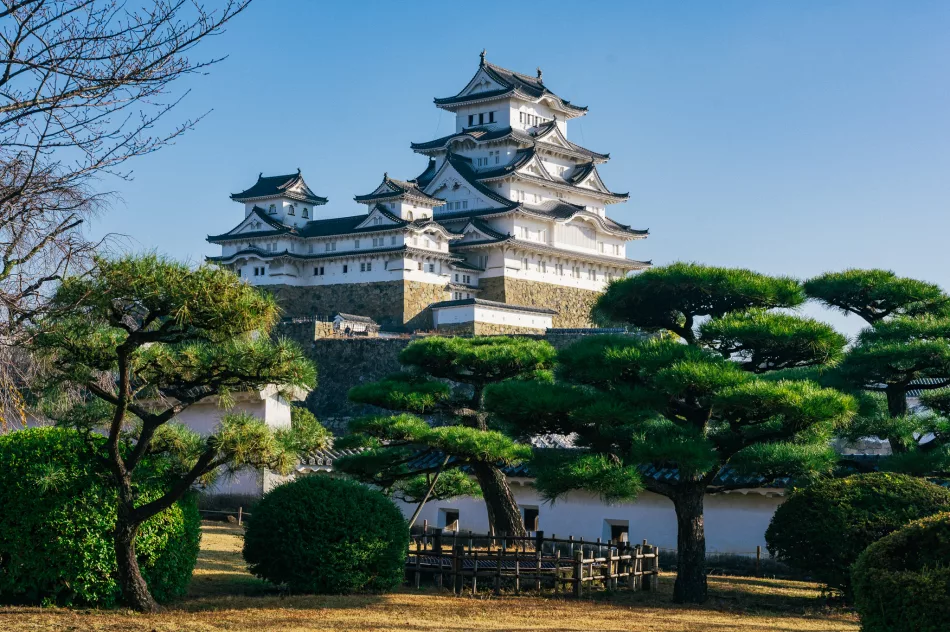
It makes perfect sense that any visitor to Japan stops at Himeji Station and heads down the main street to snap a few springtime portraits of the castle. With cherry blossoms in full bloom against blue skies and the towering visage of the White Heron, Himeji Castle in the Spring is the representation of all things Japan. So I admit, this is the one destination on this list that would likely be crowded with tourists, although many will be domestic tourists who know where to go for the best views of Spring in Japan. Himeji at least demands a day trip to stroll its vast maze-like grounds and see and feel the enormous pillars inside the castle bearing the weight of the 45-meter tall structure. But there is more to Himeji than the castle itself. Just a few hundred meters to the left, actually.
If Himeji Castle is the peanut butter in the sandwich, Koko-en Garden would be the banana slices (seriously, I can’t be the only person who ate these). Perhaps it is because the gardens were constructed nearly four centuries later in 1992 that visitors don’t always make an effort to visit it. But Koko-en was created as a perfect complement to the castle, with perfectly manicured scenery that practically screams, “Insert castle here.”
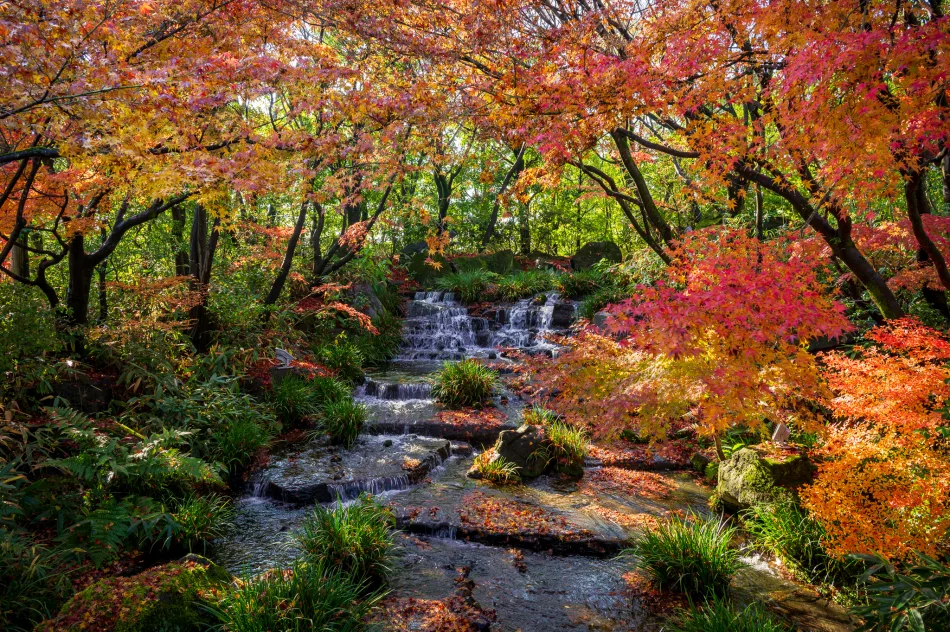
Constructed on the former grounds of the Western Residence of the castle lord, the area was already pre-made for prime views of the castle. There are nine gardens in Koko-en, each designed around a different theme. The Lord’s Residence garden is the largest and most regal, with a large central pond surrounded by flora that changes each season. Another highlight is a tea garden with the Souju-an teahouse, designed by a former grand tea master of the Urasenke tea ceremony school. The master designed the teahouse so guests could enjoy views of the castle while enjoying a leisurely tea time.
Access to Himeji
Take the Tokaido-Sanyo Shinkansen to Himeji Station, about three hours from Tokyo and one hour from Kyoto. The castle and garden are about a 15-20 minute walk or 6-8 minute bus ride from the north side of the station.
Iya Valley
The rugged Iya Valley of Tokushima Prefecture on Shikoku Island is not easy to access, and this is one of its greatest appeals. Great efforts deserve great rewards, and Iya Valley delivers breathtaking views of some of Japan’s most pristine landscapes and no hordes of tourists to remove from your pictures with Photoshop when you get home.
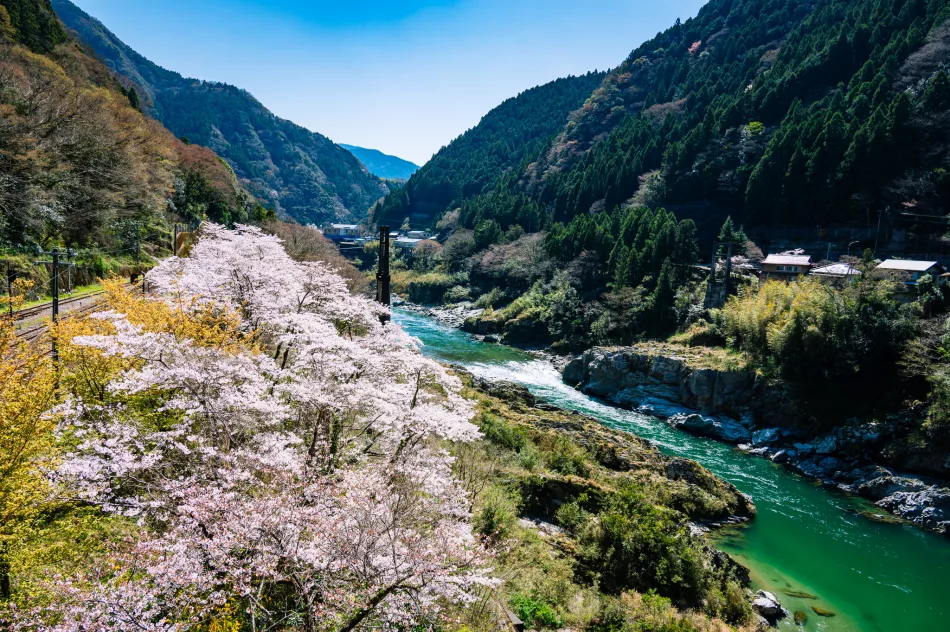
The land here is rugged and untamed, barely touched by civilization even after Shikoku became accessible by the Great Seto Bridge connecting it to the main island of Honshu in the 1980s. While much of Japan was artificially planted with cedar forests after WW2 to create lumber for rebuilding, the forests here are natural, with wild cherry trees randomly growing among other deciduous trees.
The waters of the Iya River are pure and clean, running emerald green deep in the valley and gorges. The contrast between cherry blossoms and the river is striking, and it’s like striking gold when you wind around a mountain road and discover a view containing these natural elements.
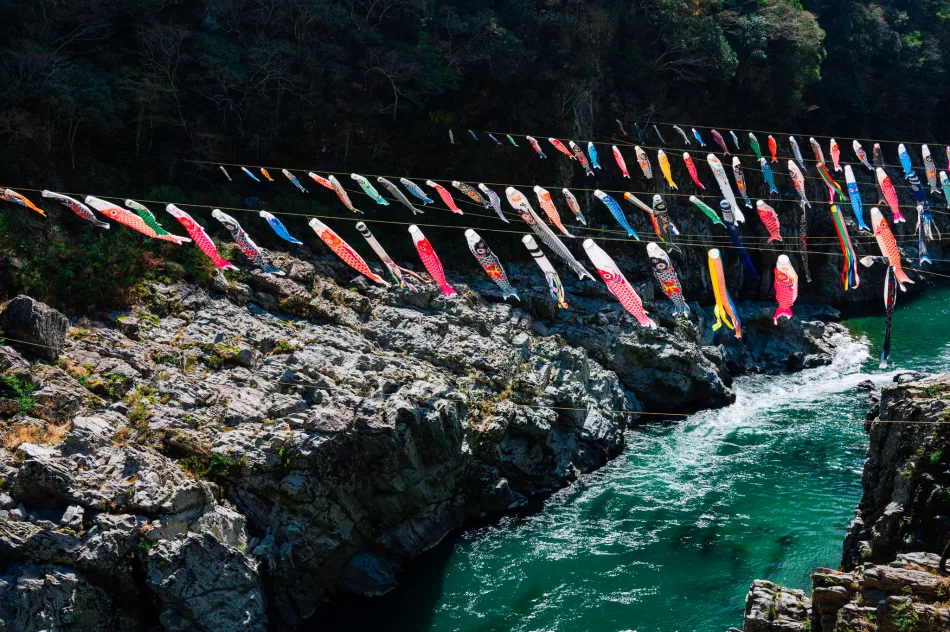
Of course, the easiest way to enjoy the view is to let someone else do the driving, and the easiest place to do that is the Oboke Gorge, at the western entrance to the Iya Valley. Take a river cruise along the Yoshino River to see the spring scenery from the water level. If you’re feeling adventurous, you can also book a river rafting experience in late Spring and do more than get your feet wet.
Access to Iya Valley and Oboke Gorge
From Tokyo, fly to Takamatsu (Kagawa) and rent a car from there. From Kyoto, take the Shinkansen to Okayama and transfer to the Nampu on the Dosan Line bound for Kochi (about three and a half hours) to get to Oboke. If you want to head to Iya Valley, either rent a car in Okayama and drive to Shikoku via the beautiful Great Seto Bridge or take the train across to Marugame or Kotohira and rent a car on the Shikoku side.
Kagoshima For Later Blooms and Unusual Cherry Blossom Landscapes
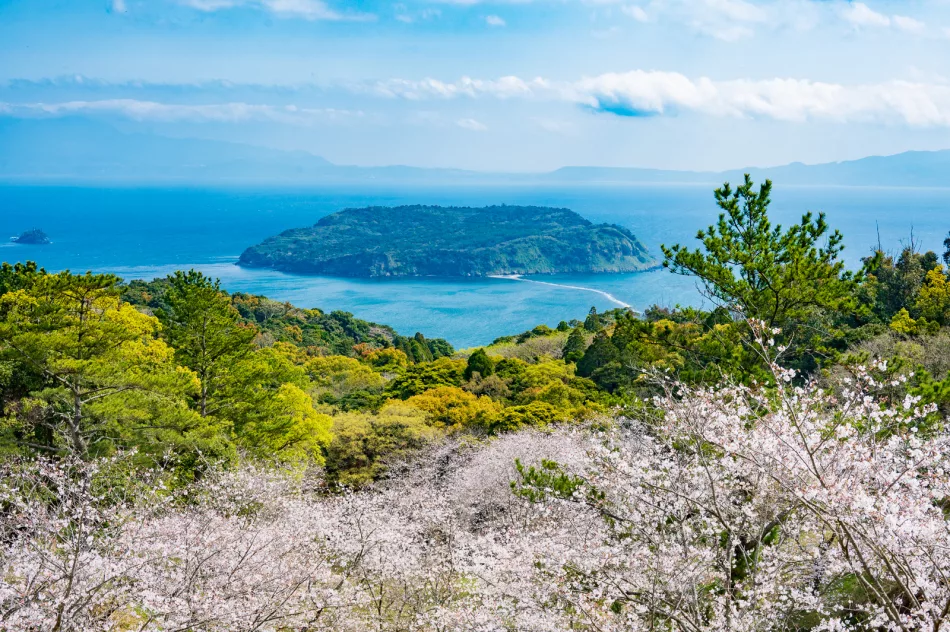
One of the best reasons to visit Kagoshima in the Spring to view cherry blossoms is simply because it is Kagoshima. I mean, few souls are making the journey to Kagoshima for cherry blossom season, despite several convenient and easy ways to get there from major cities around Japan (which we’ll talk about at the end of this section). Another plus is that Kagoshima’s cherry blossoms bloom about 10 to 12 days later than Kyoto and Tokyo, giving you some flexibility if you’re coming to Japan later in the season. And Kagoshima is an incredibly beautiful prefecture, with its active volcano island of Sakurajima, hot sand bath beaches of Ibusuki, and crane migration destination of Izumi. You don’t have to make cherry blossoms a high priority on your sightseeing list to enjoy a few wonderful days here, but if you do, you won’t need to jostle with other tourists for the best photo spots.

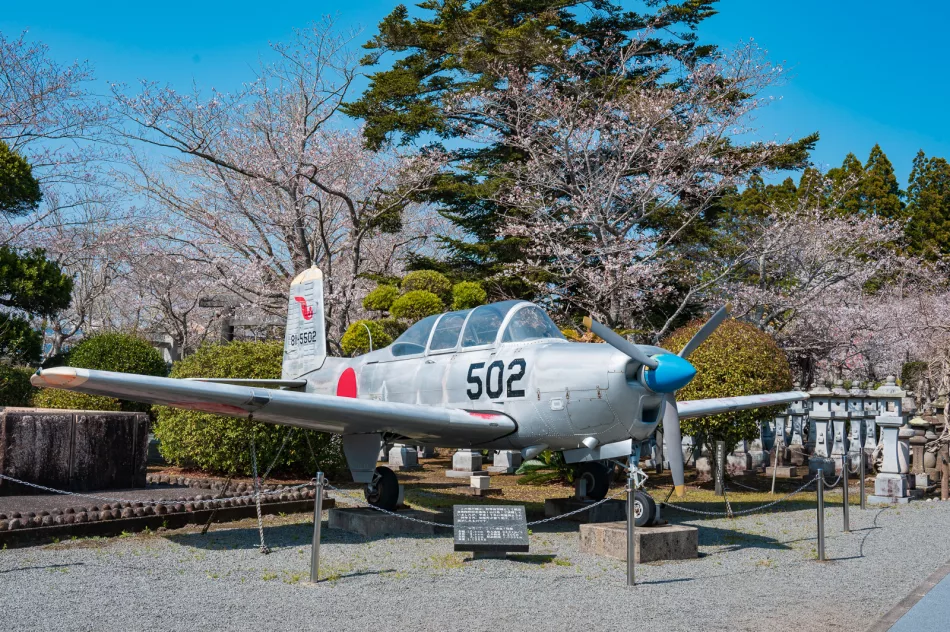
If you come to Kagoshima in the Spring, here are a few recommendations for unique spots to enjoy the bloom. Kagoshima City’s Yoshino Park boasts 11 species of cherry trees, spreading the blooming period for nearly two months from late February to late April. You can also get a spectacular view of Sakurajima from the park’s elevated observation point. Because nothing goes as well together as cherry blossoms and shrines, Nitta Shrine on the top of the mountain at Satsumasendai is a popular spot to view the beautiful blossoms combined with the shrine’s torii gate and stone bridge. Ibusuki’s Mt. Uomi is nicknamed the “Diamondhead of Japan” and overlooks the deep blue waters of the South Pacific. Hundreds of cherry trees add a unique perspective to the ocean scenery during the late-March bloom. Finally, Chiran Heiwa Park, with its controversial yet thought-provoking Chiran Peace Museum dedicated to the memory of kamikaze fighter pilots who died in the war, is a pink spectacle each Spring, with over 500 trees that are illuminated in the evenings.
Access to Kagoshima
Just about an hour and 20 minutes from Fukuoka’s Hakata Station to Kagoshima-Chuo Station by Kyushu Shinkansen.
Alternatively, take the Sunflower Ferry from Osaka Port and cruise overnight through the Seto Inland Sea to Shibushi, Kagoshima. Private cabins, a buffet restaurant, and other onboard amenities are available that make the roughly 14-hour journey relaxing and fun.
If you’re coming from Tokyo, regular flights from Haneda to Kagoshima Airport take about 2 hours.
Fukushima Prefecture for an Extended Cherry Blossom Season
If your trip to Japan is just a skosh too late to catch the prime cherry blossom season for Tokyo and Kyoto, don’t give up hope entirely. Heading north from Tokyo to the Tohoku region, the cooler weather often delays the start of cherry blossoms by a week or more from Japan’s most popular destinations.
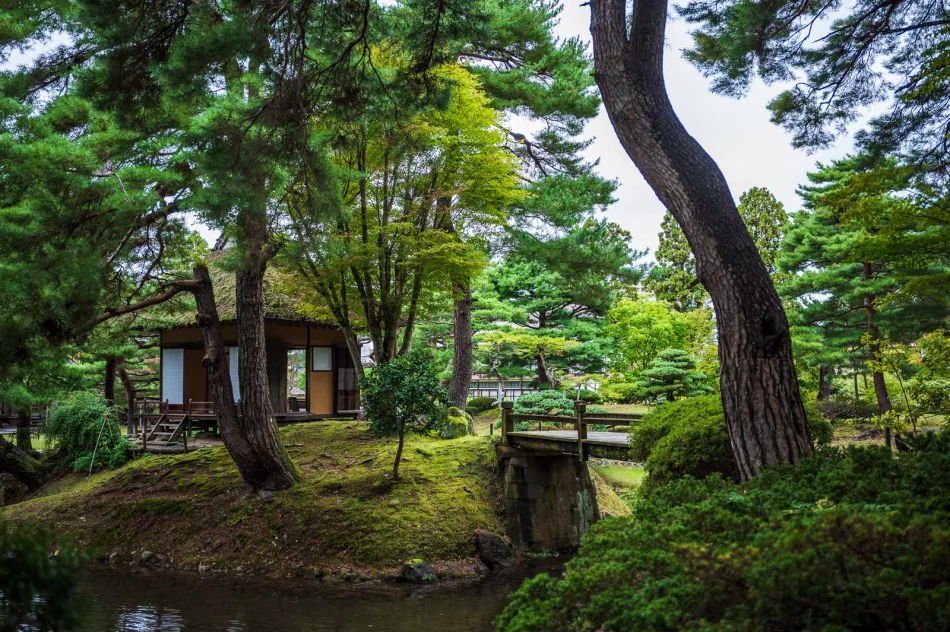
Fukushima Prefecture is a fantastic destination for several reasons. First, it is relatively close to Tokyo, the southernmost prefecture of Tohoku, so you can reach major cities like Fukushima or Koriyama in less than two hours by Shinkansen. Once you arrive, rent a car to get around because it will be much easier to access the most beautiful scenery if you can drive yourself.
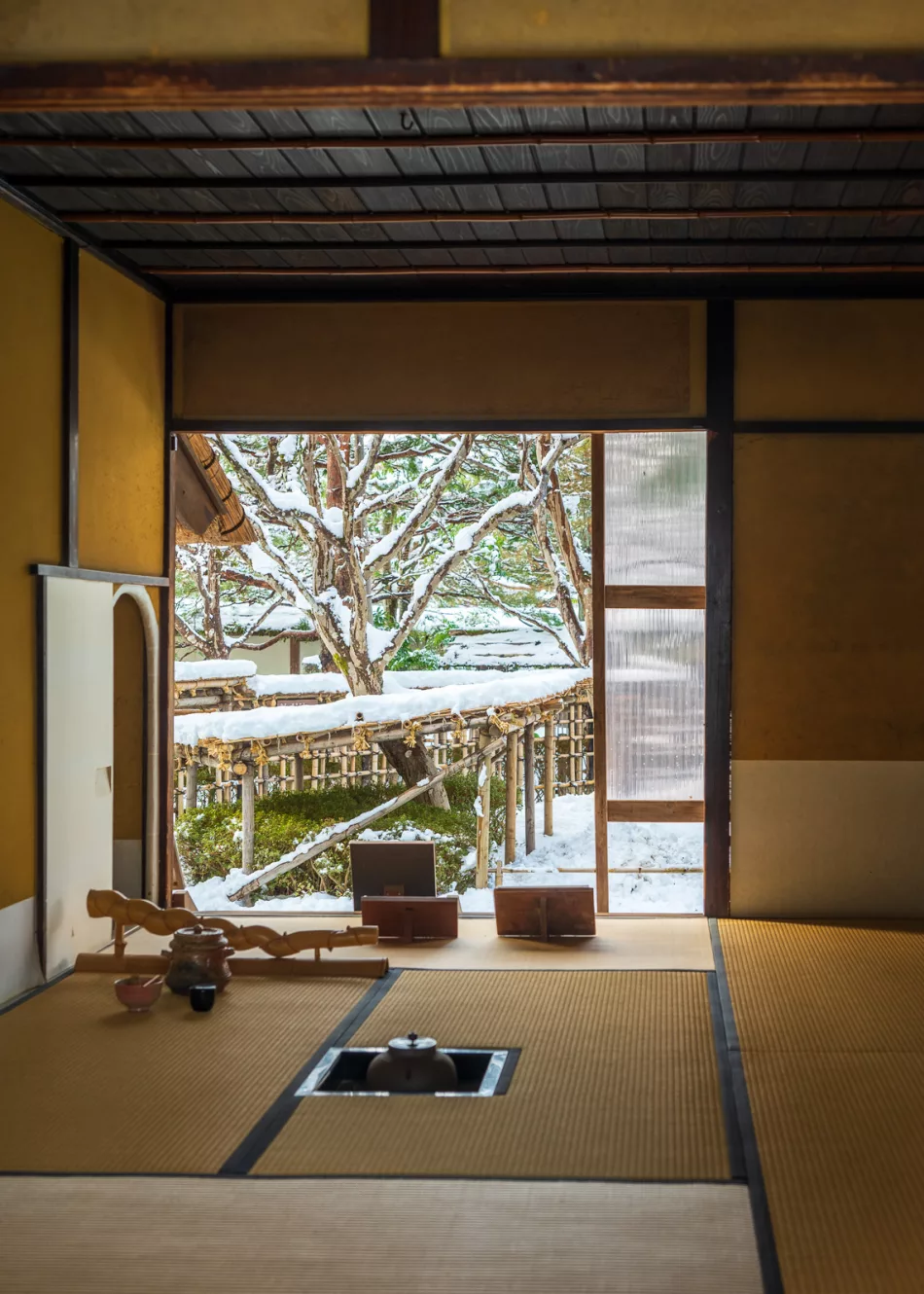

Second, the geography of Fukushima stretches from high mountains to the Pacific Ocean, so even within Fukushima, there will be places where cherry blossoms may be in full bloom even when other locations are far past their peak. Aizu-Wakamatsu City, with its stately Tsuruga Castle and many buildings and gardens related to its deep samurai history, is a fantastic place to search for cherry blossom spots. About 1,000 cherry trees are planted on the castle grounds and look fabulous from below the castle or from the castle’s observation floor. Due to the high elevation, there may be times when you can see cherry blossoms in the snow here.
In the plains of central Fukushima, Fukushima City’s Minka-en, an open-air architectural museum with a collection of traditional homes and buildings, is located in a park with a beautiful display of cherry blossoms in the Spring. Near the coast, Iwaki City’s Ogawasuwa Shrine is home to a 500-year-old weeping cherry blossom tree, one of the most beautiful species of cherry trees in Japan.
Access to Fukushima
Use the Tohoku Shinkansen from Tokyo to get to either Koriyama (an hour and 15 minutes) or Fukushima (an hour and 30 minutes) and rent a car near the station to access the best locations in the prefecture. You can also drive to Fukushima in about three and a half hours from Tokyo.
Fukui Prefecture for Pristine Coastlines with Wild Cherry Blossoms
With the extension of the Hokuriku Shinkansen line to Tsuruga Station, Fukui Prefecture has never been easier to access from Tokyo. It was never very difficult to access from Kyoto, being quite close, but few visitors knew the appeal of this little-known part of Japan. With a few shiny new Shinkansen stations opening in 2024, it will finally be Fukui’s turn to step into the tourist destination spotlight.
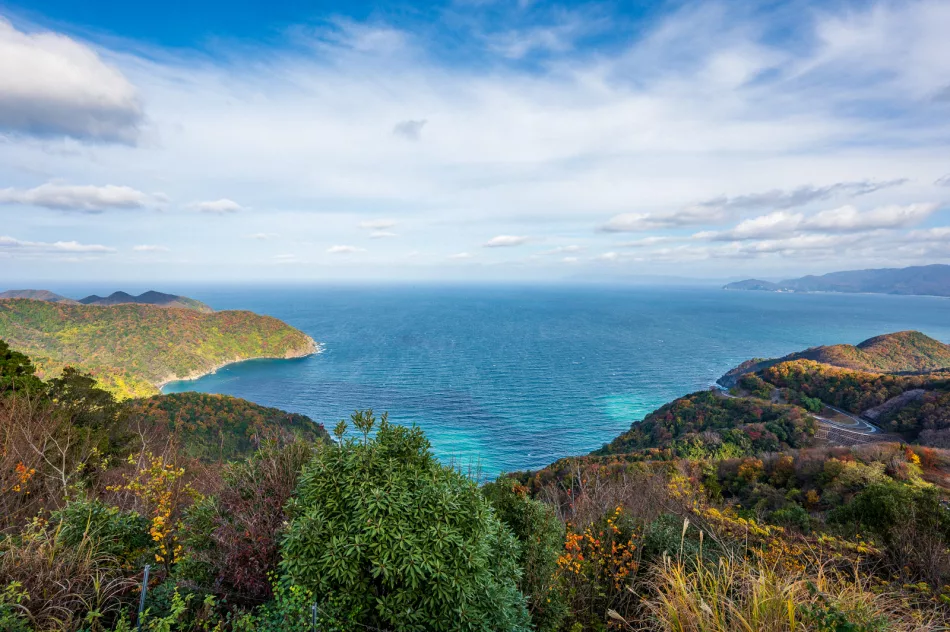
For starters, Fukui has one of Japan’s most beautiful coastlines, and that’s saying a lot for a country that is mostly coastlines. The area around Wakasa which includes Mikata Goko five lakes and the rugged coast of the Sea of Japan is particularly amazing, and with its pristine forests, wild cherry trees abound. The area’s best view is from the Mikata Goko Rainbow Line, a toll road that traverses the mountain ridges between a few of the five lakes and the Sea of Japan. Take a cable car to the summit to enjoy the panoramic view overlooking the lakes and the sea in all of their Spring glory.
You don’t even have to go far to enjoy cherry blossom season in Fukui. A short walk from JR Fukui Station brings you to the Asuwa River cherry blossom trees, a series of around 600 trees spanning over 2 kilometers, creating a cherry blossom tunnel effect during full bloom. Even if you don’t arrive until after dark, the trees are illuminated at night so you can still enjoy an evening stroll (although evenings tend to be more crowded for most cherry blossom viewing locations).
The aforementioned weeping cherry trees are generally small in number in Japan, but at Takekurabe Park in Sakai City, you’ll find 700 of them in a small area.
Access to Fukui
The Hokuriku Shinkansen extends into Fukui Prefecture starting mid-March 2024. From Tokyo, you can travel directly to either Fukui or Tsuruga, if you plan to visit the Wakasa / Mikata Goko area. Although the standard JR Rail Pass is no longer a good value for most visitors to Japan, the regional Hokuriku Arch Pass is currently still a good deal for travelers who want to visit Fukui traveling between Tokyo and Kyoto or Osaka. You can also add Kanazawa, one of my favorite alternatives to Kyoto as a freebee if you use this pass.
You’ll find a common theme of my articles is harping on the fact that visitors to Japan rarely visit places outside of Tokyo, Kyoto, and Osaka, except for maybe a day trip here and there. In fact, there are dozens of great cities around Japan that are ripe for tourism, especially during the crowded cherry blossom season. Besides these locations, the five cities I named as alternative destinations to Kyoto and Tokyo in any other time of the year also apply during the Spring. So don’t get stuck in the groove, climb out and see what other amazing places Japan has to offer; you’ll be glad you did.
